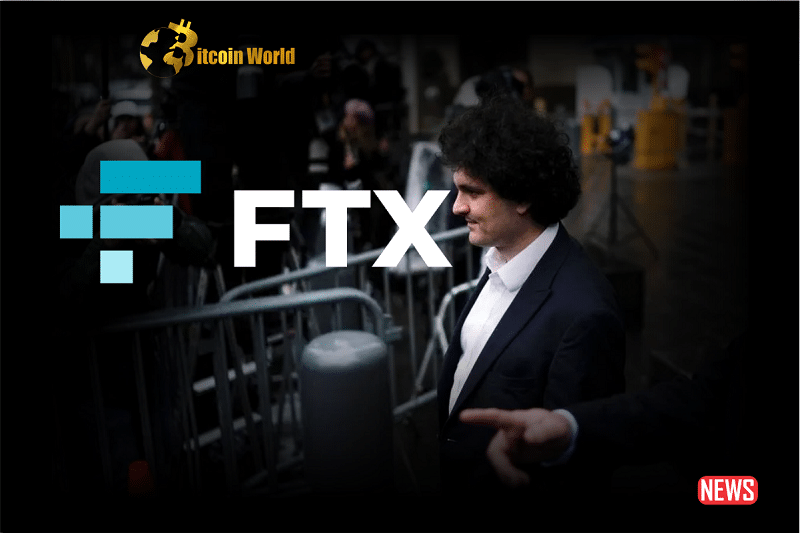The dramatic downfall of cryptocurrency exchange FTX, alongside its affiliated trading firm Alameda Research, continues to unfold, now taking a significant legal turn. Remember the whirlwind of events surrounding Sam Bankman-Fried? Well, the current leadership at FTX isn’t letting things rest. They’ve officially filed a lawsuit in U.S. Bankruptcy Court, and it’s a big one. The core allegations? Fraudulent activities and what they claim was a massively overpriced acquisition that ultimately contributed to the exchange’s spectacular collapse.
What’s This Lawsuit About? The Embed Deal
At the heart of this legal battle lies the acquisition of Embed, a stock clearing platform, by Alameda Research. Think of it as buying a company to handle the behind-the-scenes work of trading stocks. Here’s where it gets interesting: FTX’s current leaders are alleging that Sam Bankman-Fried, along with other top executives, knew full well that Alameda Research was teetering on the brink of insolvency when they greenlit this $250 million deal. Ouch.
The lawsuit goes even further, claiming that the funds used to purchase Embed weren’t just Alameda’s – they were allegedly siphoned from FTX customer accounts. That’s a serious accusation, and it forms a key part of the fraud claims.
Who’s Being Targeted in the Lawsuit?
It’s not just SBF in the crosshairs. The lawsuit names several key figures involved in the Embed acquisition:
- Gary Wang: The co-founder of FTX.
- Nishad Singh: A former high-ranking executive at FTX.
But the legal action extends beyond the former FTX/Alameda inner circle. It also seeks to recover funds from:
- Michael Giles: The founder and former CEO of Embed.
- Early Embed Investors: Those who sold their stakes to Bankman-Fried and his associates.
Now, it’s crucial to understand this: Giles and the Embed shareholders aren’t being accused of any criminal wrongdoing. The focus here is on the assertion that Alameda was already in dire financial straits when the acquisition happened and that an inflated price was paid for Embed. Essentially, FTX’s current leadership wants to claw back as much money as possible for the creditors who were impacted by the bankruptcy.
Was the Embed Deal Just a Bad Business Decision?
Beyond the allegations of outright fraud, FTX’s bankruptcy team argues that the Embed acquisition was simply a terrible decision from a business perspective. After FTX’s collapse, Embed was put up for sale as part of the bankruptcy proceedings. The shocking revelation? It’s now considered to be worth significantly less than the $250 million price tag Bankman-Fried and his team slapped on it.
Think of it like buying a used car for the price of a brand new luxury model – and then finding out the engine doesn’t even work properly.
What Did Insiders Say About Embed?
Internal communications paint a concerning picture. Messages included in the lawsuit filing reveal anxieties about Embed’s capacity to handle a surge in new user accounts. This suggests that even within FTX, there were doubts about the platform’s capabilities. Adding to the scrutiny, the lawsuit highlights that as of March 31, 2022, Embed held around $37 million in assets but only generated a modest $25,000 in profit. This raises serious questions about the justification for the hefty acquisition price.
The $55 Million Bonus: A Red Flag?
One particular aspect of the deal is drawing intense scrutiny: the $55 million retention bonus given to Michael Giles. What makes this bonus unusual? It didn’t require Giles to even stay with the company after the acquisition was finalized. FTX’s lawyers argue this arrangement is highly irregular and that Giles effectively received a substantial payout for his equity as Embed’s largest shareholder.
Signs of a Rushed Deal?
Communications among Embed employees hint at a rapid deal closure, potentially skipping crucial due diligence. FTX’s legal team claims that despite efforts to sell Embed after the acquisition, no one is willing to pay anything close to the original $250 million. This strongly suggests that the initial valuation was significantly inflated.
The Rock-Bottom Buyback Bid
In a twist, Michael Giles himself reportedly submitted the highest bid to repurchase Embed during the bankruptcy process – for a mere $1 million. While Giles hasn’t commented publicly, this stark contrast to the initial purchase price further underscores the argument that FTX massively overpaid.
| Metric | Value |
|---|---|
| Acquisition Price by FTX | $250 Million |
| Retention Bonus to Michael Giles | $55 Million |
| Embed’s Assets (as of March 2022) | ~$37 Million |
| Embed’s Profit (as of March 2022) | ~$25,000 |
| Michael Giles’ Buyback Bid | $1 Million |
What Does This Mean for the Future?
This lawsuit is a critical step in untangling the complex web of events that led to FTX’s collapse. It aims to hold those responsible accountable and, more importantly, to recover funds for the countless creditors left in the lurch. As the legal proceedings unfold, we’ll gain a clearer understanding of the alleged fraudulent activities and the true financial implications for everyone involved. The case highlights the importance of due diligence and the potential dangers of unchecked power and financial mismanagement in the fast-paced world of cryptocurrency.
Disclaimer: The information provided is not trading advice, Bitcoinworld.co.in holds no liability for any investments made based on the information provided on this page. We strongly recommend independent research and/or consultation with a qualified professional before making any investment decisions.


